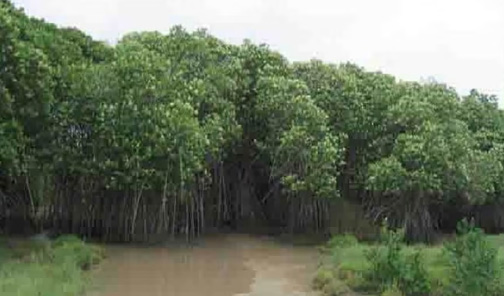Bhubaneswar: The State has 258.98 Square kilometers of mangrove cover and mangrove plantation over an area of 337 Hectares have been undertaken during the financial year 2023-24 under different schemes operated by the State Government.
This was informed by Forest, Environment and Climate Change Minister Ganesh Ram Singkhuntia in the State Assembly today.
While replying to a query of senior BJD MLA Ranendra Pratap Swain, the Minister said, “Our State has 258.98 Sq Km of mangrove cover as per the India State of Forest Report (ISFR), 2021. There are 3 different types of mangrove species available in our State namely True Mangrove (30 species), Back Mangroves (30 species) and Mangrove Associate (28 species).”
Some of the important and widespread species of mangroves available are Avicennia officinalis, Rhizophora mucronate, Sonneratia alba etc., he said.
Mangrove plantations over an area of 337 Hectares have been undertaken during the financial year 2023-24 under different schemes operated by the State Government.
The Programme Mangrove Initiative for shoreline Habitats & Tangible Incomes (MISHTI) was announced in the Union Budget FY 2023-24 to promote and conserve mangroves as a unique, natural ecosystem having very high biological productivity and carbon sequestration potential, the Minister stated.
Under the programme MISHTI, activities like Hental Mahostav celebration and reward to persons alienating their private land in favour of the Government for raising such mangrove plantation have been undertaken during the year 2023-24. However, as desired by Government of India, a Detailed Project Report (DPR) for five-year operation (from 2024-25 to 2028-29) under mangrove Initiative for shoreline habitats and tangible incomes with a financial outlay of Rs 36,495 crore has been duly submitted, he pointed out.
The mangrove ecosystem is an intertidal ecosystem which is inundated by sea water and the salinity can vary from 0-35 psu (practical salinity unit) or even higher in certain hyper-saline habitats.
Shri Singhkhuntia said the substrate often consists of soft sediments which are waterlogged where low oxygen conditions occur. Plants and animals which live in the mangroves have various adaptations to allow them to survive under these stressful conditions,.
However, he added, ecosystems like tropical climate, fine grained alluvium soil, overall need of a unique wetland ecosystem inhabiting the edge of land & sea, rooted & thriving in sea water, specific combination of tidal influences, salinity, water logging, sediments characteristics, temperature and nutrient level brought in by the tidal movement is needed for growth and sustenance of mangrove forests in the State.


